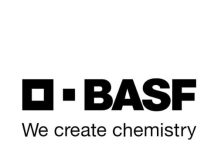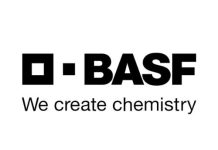 Despite an ever-increasing demand for chemical fertilisers to meet the global demand for food, there are limited fertiliser resources available and growing public concern related to food safety and environmental conservation.
Despite an ever-increasing demand for chemical fertilisers to meet the global demand for food, there are limited fertiliser resources available and growing public concern related to food safety and environmental conservation.
From the South African producer’s perspective, the weakening of the rand, limited and erratic fertiliser supply, and increasing shipping and manufacturing costs all add to the conundrum. This has led to calls for fertiliser use efficiency to be improved, but obviously not if it results in decreased crop productivity and quality.
Productivity and profitability
Nutrient use efficiency (NUE) is a measure that shows the ability of crops to utilise nutrients and therefore it has a very significant value in the evaluation of crop production systems for productivity and profitability. This indicator is highly affected by fertiliser management practices as well as by soil and irrigation management. There are many ways to calculate NUE and the method used should be contingent with the goals for specific efficiency evaluation, the availability of data and the period for which NUE is to be determined. Data collected during precision farming operations, combined with crop response curves obtained from on-farm fertilisation trials, make it possible to have various NUE values for individual fields and production zones.
In the short term, NUE can be increased by limiting inputs, even at the cost of yield. However, these gains will essentially decrease the long-term efficiency and productivity of that specific field or zone because the nutrients depleted must be replaced to restore its full productivity. Long-term NUE can best be enhanced by using the Omnia 5R™ fertiliser best management practice (FBMP) which is based on applying the right source of nutrients, of the right quality, at the right rate, the right time, and the right place.
Nutrient management
All these mechanisms interact with one another, with the growing crop, the environment, and other management practices. Omnia’s 5R™ FBMP therefore incorporates the whole nutrient management system with all aspects of crop management practices and how they influence efficient nutrient utilisation by crops. It is important to note that with the 5R™ FBMP, micronutrients are also important, as deficiencies might impact the uptake of nitrogen, phosphorus or potassium, which will negatively affect NUE.
Omnia’s 5R™ FBMP consists of a range of customised solutions aimed at increasing crop productivity whilst decreasing the risks associated with crop production.
Risk management
OmniZone™ and OmniRiskIQ™ are risk management solutions unique to Omnia Nutriology® that models the cumulative probability or certainty of obtaining a specific yield in a specific field or management zone. These probabilities are statistically calculated from combine harvester yield data or yield estimates derived from NDVI satellite images. OmniRiskIQ™ quantifies the level of risk associated with each zone, therefore allowing the producer to manage the opportunities that the season might offer by selecting a specific target yield for each management zone. The model calculates the profitability for each zone using current input costs and crop prices. By running different scenarios, the producer can then select the best fertiliser strategy according to his specific circumstances and risk appetite.
Omnia software-driven programs
OFOS® (Omnia Fertigation Optimisation System) and ONAS™ (Optimised Nutrient Application System) are software-driven programs and procedures to optimise the use efficiency of plant nutrients under fertigation, whether applied through drip and/or micro or pivot irrigation.
OFOS® and ONAS™ can be used in a wide range of irrigation systems – from highly sophisticated short-cycle drip systems to the application of simple fertiliser programs through pivots. The success of these products lies in the fact that the right quantity and concentration of plant nutrients are transported with the irrigation water directly to the feeder roots of the plant. The plant nutrient concentration within the irrigation water gives fertigation a new dimension of contribution and this is what distinguishes the Omnia programs from the rest.
The producer can manipulate the concentration of plant nutrients without having to use a whole range of products or highly sophisticated injection equipment. The producer can also manipulate the plant nutrient concentration from one phenological stage to another with minimal management inputs to better meet the needs of the plant.
OFOS® and ONAS™ are based on well-known published theory to optimally apply and monitor plant nutrition through irrigation in a simple way to optimise the plants’ NUE under specific circumstances and therefore ensure the best possible yields and quality of crops.
In an environment with rising production costs and shrinking profit margins, it is important for the producer to optimise the management of all the resources at his disposal. OmniPrecise® together with Omnia’s team of agronomists can bring about a significant improvement in the efficient and responsible use of fertilisers, thereby lowering the risks associated with production whilst optimising yield and quality.













